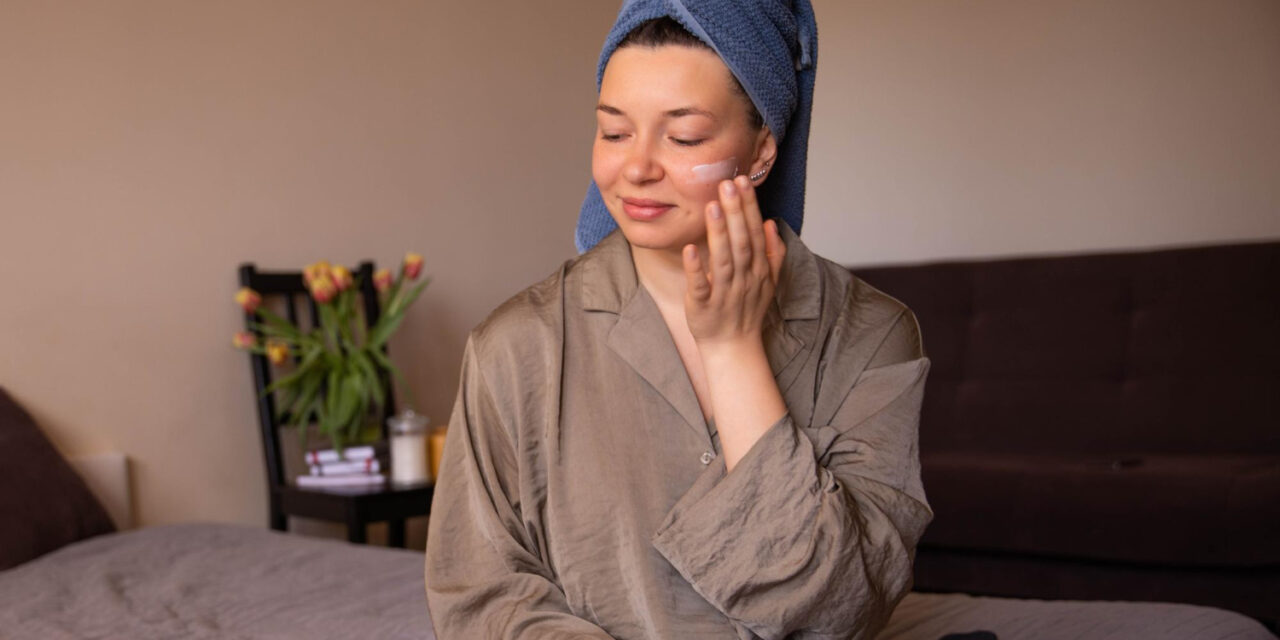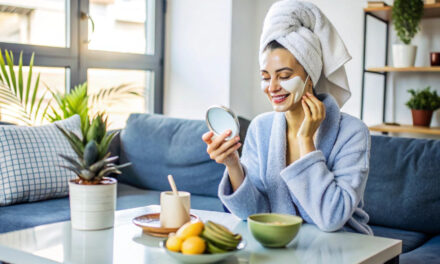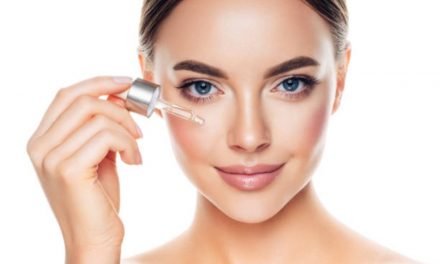What is the Most Beneficial Skincare Routine for the Night?
A well-planned nighttime skincare practice goes a long way in determining how your skin will look and feel the next day. Skin self-repairs and regenerates while sleeping, so this is an optimal time to nourish, fix, and renew your skin. Given that question, what is the most effective skin regimen for the night? With countless products and advice out there, it can be exhausting to determine which steps to take. The best news is that the best nighttime skincare routine is not massively complex. A good routine that targets cleansing, treating, and hydrating your skin is all it takes to wake up with beautiful skin.
In this article, we will walk you through every aspect of a night skincare routine and explain why each piece is important making it easier for you to develop a custom routine for your skin type.
Why Is a Nighttime Skincare Routine Necessary?
It is during the night when your skin does most of its repair work – aka undergoing the skin restoration process. Without environmental stressors, exposure to active ingredients is a lot more effective and gives the opportunity to really take aim at the specific issues on the skin.
The body generates collagen, the protein that gives skin its elasticity, and skin cells regenerate at a faster rate at night. Moreover, the moisture barrier of your skin is more permeable at night, which allows for more effective absorption of moisturizers and other nourishing products. Thus, your night skincare routine should aim at hydration, skin cell regeneration, and inhibiting skin aging.
All in all, allocating some time for a nighttime sequence can help your skin undergo its natural repair process, resulting in a more youthful, smooth, and glowing appearance.
Step 1: Cleanse Skin
The cornerstone of the skincare routine is cleansing, especially at night. The skin tends to capture dirt, oil, makeup, and other pollutants during the day, all of which need to be removed efficiently for any skin treatment products to be effective. Without thorough cleansing, the impurities left on the skin can interfere with every skincare product’s ability to work as intended.
Choose a gentle, non-stripping cleanser that meets your skin type needs. For example:
- Use an oil-based makeup remover or a micellar water to break down makeup and SPF for skin that uses makeup. Then, follow with a generous amount of a foaming cleanser to remove the leftover residue.
- For oily skin or acne-prone skin: Use a gel or foam cleanser with acne-fighting ingredients like Salicylic Acid or Benzoyl Peroxide to get rid of excess oil without the risk of breakouts.
- If you have dry skin: You should use a cream cleanser that would hydrate your skin, containing soothing ingredients such as aloe vera or glycerin.
Remember to always check that you do not feel tight after cleansing. Tightness after cleansing measures the effectiveness of the product. Gentle and effective cleansers allow further products to be absorbed by the skin well.
Step 2: Apply a Toner (Optional but Helps)
Toner might feel like an addition, but depending on your skin type and concerns, it packs a punch in benefits. While cleansing, if the skin barrier gets ripped apart, the toner helps to balance out the ph levels. Especially for the foaming cleansers, toner works wonders. It adds surplus moisture while wiping off remaining makeup.
- Oily skin: Toners that have witch hazel or tea tree oil are best to remove excess oil and prevent acne from sprouting.
- Dry or sensitive skin: Rose water or chamomile are abundant in hydrating toners that also soothe sensitive skin.
Simply apply toner using a cotton pad or a hand while gently patting it on the face and neck. Give it few seconds to a couple of minutes to absorb before proceeding.
Step 3: Apply Serums and Treatments
The next phase in a precise skincare regimen for nighttime is targeted treatments. These lightweight products are specially designed to deeply infuse into the skin and address specific issues such as wrinkles, pigmentation, or acne. Serums come with a high concentration of active ingredients which makes it possible to tackle multiple issues effortlessly.
- Anti-aging: If you want to combat the signs of aging, Retinol is one of the most effective ingredients for this. With the use of a serum containing Retinol or peptides, fine lines can be reduced, collagen production can be boosted, and skin texture improved.
- Pigmentation and brightening: Niacinamide and Vitamin C can even out skin tone while minimizing dark spots.
- Hydration: If you’re prone to dry or dehydrated skin, a serum infused with hyaluronic acid can help hydrate and plump up your skin overnight.
Instead of applying the serum on directly, pour some onto your fingertips and gently press the serum into the skin. Do not rub it as this can irritate the skin.
Step 4: Eye Cream – For the Specific Area
The area surrounding the eyes is thinner than the rest of the face which is why it is more susceptible to dryness and fine lines. Crows feet, puffiness, dark circles, or any other eye related issues can be dealt with by eye creams.
While buying an eye cream, check if it has the following ingredients:
- Caffeine: Constricting blood vessels to reduce puffiness.
- Peptides: Enhancing collagen production and softening fine lines.
- Hyaluronic Acid: Sweetens and engorges the under-eye skin.
With your ring finger, the one that puts on the least amount of pressure, tap the eye cream on the orbital bone. Do not rub too much, the skin around the eyes is very soft.
Step 5: Moisturize – Seal in Hydration
Moisturizing is an essential step to lock in hydration and support your skin’s natural repair processes overnight. At night, you can afford to use a richer, more emollient moisturizer than you would during the day, as it will provide hydration while you sleep.
- For dry skin: Choose a thick, nourishing night cream that contains ingredients like ceramides, shea butter, or squalane.
- For oily or combination skin: Opt for a lightweight, gel-based moisturizer that won’t clog pores but still provides ample hydration.
- For sensitive skin: A fragrance-free, gentle moisturizer with soothing ingredients like calendula or chamomile will help prevent irritation.
Apply the moisturizer in upward strokes to help with lymphatic drainage and improve circulation. This will also help your skin absorb the product more effectively.
Step 6: Don’t Forget Lip Care
The skin on your lips is also delicate and can become dry, chapped, or cracked overnight. To keep your lips soft and hydrated, apply a rich lip balm or overnight lip mask before bed. Look for products with nourishing ingredients like shea butter, lanolin, or honey, which can help seal in moisture while you sleep.
You can also use a lip scrub once or twice a week to exfoliate dry, flaky skin and reveal smoother lips.
Step 7: Overnight Mask (Optional but Beneficial)
If you want to give your skin an extra boost, consider using an overnight mask once or twice a week. These masks are formulated to stay on overnight, providing intensive treatment for specific concerns such as dryness, acne, or dullness.
- Hydrating masks: If your skin is feeling dry or dehydrated, look for a mask that contains ingredients like hyaluronic acid or glycerin.
- Clarifying masks: For acne-prone skin, choose a mask with ingredients like salicylic acid, clay, or sulfur to help clear up breakouts.
After applying your moisturizer, apply the mask as the final step in your routine and allow it to work its magic overnight.
Extra Tips for a Perfect Night Skincare Routine
Consistency Is Key
The best skincare routine for the night requires consistency. Stick to your routine every night, even if you’re tired. Over time, you’ll start seeing improvements in your skin’s texture, tone, and overall appearance.
Adjust Based on Your Skin’s Needs
Your skin’s needs can change with the seasons or based on environmental factors. Pay attention to how your skin feels and adjust your routine accordingly. For example, in the winter months, you may need extra hydration, while in the summer, you may want to focus on oil control.
Get Enough Sleep
A good night’s sleep is crucial for healthy skin. While skincare products can help, nothing beats the skin’s natural repair cycle, which is most active while you sleep. Aim for 7-9 hours of sleep per night to support your skin’s health.
Conclusion
In conclusion, the best skincare routine for the night involves cleansing, treating, and hydrating your skin with the right products. Whether you have dry, oily, or sensitive skin, you can customize your night routine to target your unique needs. Cleansing, toning, serums, eye cream, and moisturising can give you smoother, clearer, and more radiant skin in the morning.
Remember, consistency is the key to seeing long-term benefits, and don’t forget to listen to your skin. With the right routine, you’ll see noticeable improvements over time, making your night skincare ritual something to look forward to!





